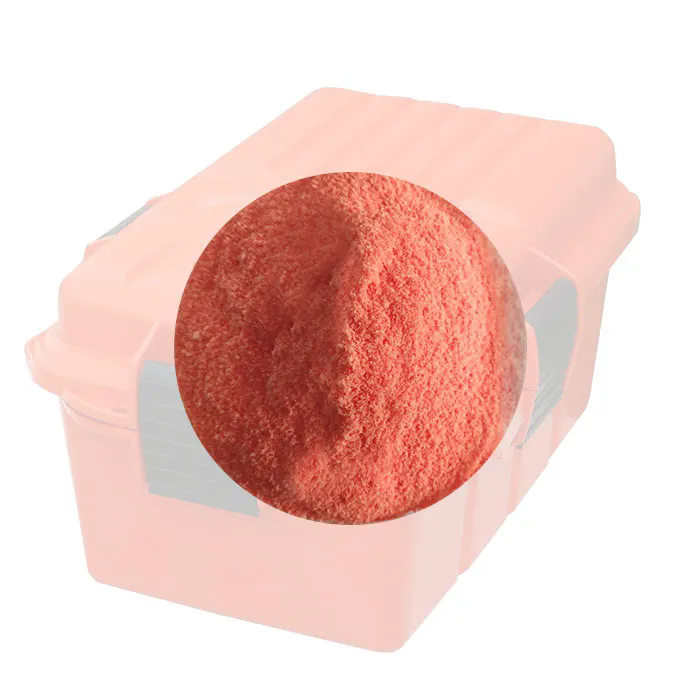HDPE Rotomoulding Material: Versatility, Durability, and Innovation
2024-09-10
High-Density Polyethylene (HDPE) is a staple in the world of plastics, renowned for its exceptional strength, durability, and versatility. Among its many applications, HDPE stands out in the rotomoulding process, a popular method for creating hollow plastic products. This blog will explore the benefits of using HDPE rotomoulding material, its applications, and why it's an excellent choice for a wide range of industries.
What is HDPE Rotomoulding?
Rotomoulding, or rotational moulding, is a manufacturing process used to create hollow plastic parts. In this process, HDPE powder is loaded into a mould, which is then heated and rotated along two axes. As the mould heats up, the HDPE powder melts and evenly coats the inside of the mould, forming a seamless, hollow part. Once cooled, the mould is opened, and the finished part is removed.
Benefits of HDPE in Rotomoulding
1. Durability and Strength: HDPE is known for its high tensile strength and impact resistance. When used in rotomoulding, it produces parts that are robust and long-lasting, capable of withstanding harsh environmental conditions and heavy usage. This durability makes HDPE ideal for products that are exposed to outdoor elements or subjected to rigorous use.
2. Flexibility and Design Freedom: The rotomoulding process allows for the creation of complex shapes and designs with HDPE. The material’s flexibility means it can be molded into various sizes and forms, including large tanks, playground equipment, and more. This versatility enables designers and manufacturers to innovate and produce unique products tailored to specific needs.
3. Chemical Resistance: HDPE is resistant to a wide range of chemicals, including acids, bases, and solvents. This property is particularly beneficial in industries where the products are exposed to corrosive substances, such as chemical storage tanks or agricultural containers. The chemical resistance of HDPE ensures that the products remain functional and safe over time.
4. Lightweight Nature: Despite its strength, HDPE is relatively lightweight compared to other materials. This feature makes it easier to handle, transport, and install products made from HDPE. The lightweight nature also contributes to cost savings in shipping and logistics.
5. Environmental Benefits: HDPE is a recyclable material, which aligns with growing environmental concerns. Many HDPE products are made from recycled material, and the material itself can be recycled at the end of its lifecycle. This sustainability aspect makes HDPE an environmentally friendly choice for manufacturers and consumers alike.
Applications of HDPE Rotomoulding
The versatility of HDPE rotomoulding means it is used in a wide range of applications across various industries:
1. Industrial Containers and Tanks: HDPE rotomoulding is commonly used to produce industrial containers, tanks, and bins. These products are used for storing liquids, chemicals, and other materials, and benefit from HDPE's strength and chemical resistance.
2. Agricultural Products: In the agriculture sector, HDPE rotomoulded products include rainwater harvesting tanks, irrigation components, and feed storage bins. The durability and resistance to environmental factors make HDPE an ideal choice for agricultural applications.
3. Consumer Goods: HDPE rotomoulding is used to manufacture a variety of consumer goods, including outdoor furniture, coolers, and playground equipment. The ability to create complex shapes and designs allows for a wide range of products that are both functional and aesthetically pleasing.
4. Marine Applications: The resistance to corrosion and water damage makes HDPE suitable for marine applications. Rotomoulded products such as boat fenders, marine buoys, and dock components benefit from HDPE’s durability and resistance to saltwater and UV rays.
5. Construction and Infrastructure: HDPE rotomoulded products are used in construction and infrastructure projects, including pipes, drainage systems, and cable protection ducts. The material’s strength and resistance to chemicals and moisture make it suitable for various construction applications.
Future Trends and Innovations
As technology advances, the use of HDPE in rotomoulding continues to evolve. Some emerging trends and innovations include:
1. Advanced Materials: Researchers are developing new HDPE formulations with enhanced properties, such as improved impact resistance, higher temperature tolerance, and increased recyclability. These advancements expand the range of applications for HDPE rotomoulded products.
2. Smart Technology Integration: The integration of smart technology into rotomoulded products is an emerging trend. For example, sensors and tracking systems can be incorporated into HDPE tanks or containers, providing real-time data on usage, temperature, and other parameters.
3. Sustainable Practices: The focus on sustainability is driving innovations in HDPE production and recycling. Efforts are being made to increase the use of recycled HDPE in manufacturing processes and to improve the recyclability of end products, reducing environmental impact.
4. Customization and Personalization: Advances in rotomoulding technology allow for greater customization and personalization of HDPE products. Manufacturers can now create bespoke designs and incorporate branding elements, catering to specific customer needs and preferences.
Conclusion
HDPE rotomoulding material offers a range of benefits, including durability, flexibility, and environmental friendliness. Its versatility makes it suitable for a wide array of applications, from industrial containers to consumer goods and marine products. As technology and sustainability practices continue to evolve, HDPE rotomoulding will remain a crucial component in the development of innovative and high-performance plastic products.
Whether you're involved in manufacturing, design, or procurement, understanding the advantages and applications of HDPE rotomoulding can help you make informed decisions and leverage this versatile material to meet your needs effectively.



